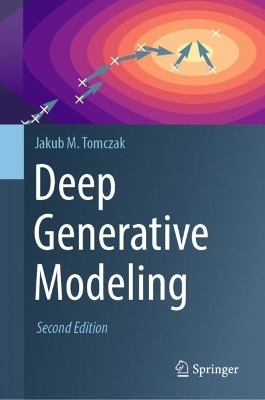
Deep Generative Modeling
Springer International Publishing (Verlag)
978-3-031-64086-5 (ISBN)
This first comprehensive book on models behind Generative AI has been thoroughly revised to cover all major classes of deep generative models: mixture models, Probabilistic Circuits, Autoregressive Models, Flow-based Models, Latent Variable Models, GANs, Hybrid Models, Score-based Generative Models, Energy-based Models, and Large Language Models. In addition, Generative AI Systems are discussed, demonstrating how deep generative models can be used for neural compression, among others.
Deep Generative Modeling is designed to appeal to curious students, engineers, and researchers with a modest mathematical background in undergraduate calculus, linear algebra, probability theory, and the basics of machine learning, deep learning, and programming in Python and PyTorch (or other deep learning libraries). It should find interest among students and researchers from a variety of backgrounds, including computer science, engineering, data science, physics, and bioinformatics who wish to get familiar with deep generative modeling.
In order to engage with a reader, the book introduces fundamental concepts with specific examples and code snippets. The full code accompanying the book is available on the author's GitHub site: github.com/jmtomczak/intro_dgm
The ultimate aim of the book is to outline the most important techniques in deep generative modeling and, eventually, enable readers to formulate new models and implement them.
Jakub M. Tomczak is an associate professor and the head of the Generative AI group at the Eindhoven University of Technology (TU/e). Before joining the TU/e, he was an assistant professor at Vrije Universiteit Amsterdam, a deep learning researcher (Engineer, Staff) in Qualcomm AI Research in Amsterdam, a Marie Sklodowska-Curie individual fellow in Prof. Max Welling's group at the University of Amsterdam, and an assistant professor and a postdoc at the Wroclaw University of Technology. His main research interests include ML, DL, deep generative modeling (GenAI), and Bayesian inference, with applications to image/text processing, Life Sciences, Molecular Sciences, and quantitative finance. He serves as an action editor of "Transactions of Machine Learning Research", and an area chair of major AI conferences (e.g., NeurIPS, ICML, AISTATS). He is a program chair of NeurIPS 2024. He is the author of the book entitled "Deep Generative Modeling", the first comprehensive book on Generative AI. He is also the founder of Amsterdam AI Solutions.
Chapter 1 Why Deep Generative Modeling?.- Chapter 2 Probabilistic modeling: From Mixture Models to Probabilistic Circuits.- Chapter 3 Autoregressive Models.- Chapter 4 Flow-based Models.- Chapter 5 Latent Variable Models.- Chapter 6 Hybrid Modeling.- Chapter 7 Energy-based Models.- Chapter 8 Generative Adversarial Networks.- Chapter 9 Score-based Generative Models.- Chapter 10 Deep Generative Modeling for Neural Compression.- Chapter 11 From Large Language Models to Generative AI.
| Erscheinungsdatum | 12.09.2024 |
|---|---|
| Zusatzinfo | XXIII, 313 p. 179 illus., 170 illus. in color. |
| Verlagsort | Cham |
| Sprache | englisch |
| Maße | 155 x 235 mm |
| Themenwelt | Informatik ► Theorie / Studium ► Künstliche Intelligenz / Robotik |
| Schlagworte | autoregressive models • Boltzmann machines • diffusion models • Energy-based Models • Flow-based models • Gans • generative AI • Hybrid Models • Large Language Models • latent variable models • Probabilistic Circuits • Score-based Generative Models |
| ISBN-10 | 3-031-64086-1 / 3031640861 |
| ISBN-13 | 978-3-031-64086-5 / 9783031640865 |
| Zustand | Neuware |
| Informationen gemäß Produktsicherheitsverordnung (GPSR) | |
| Haben Sie eine Frage zum Produkt? |
aus dem Bereich


